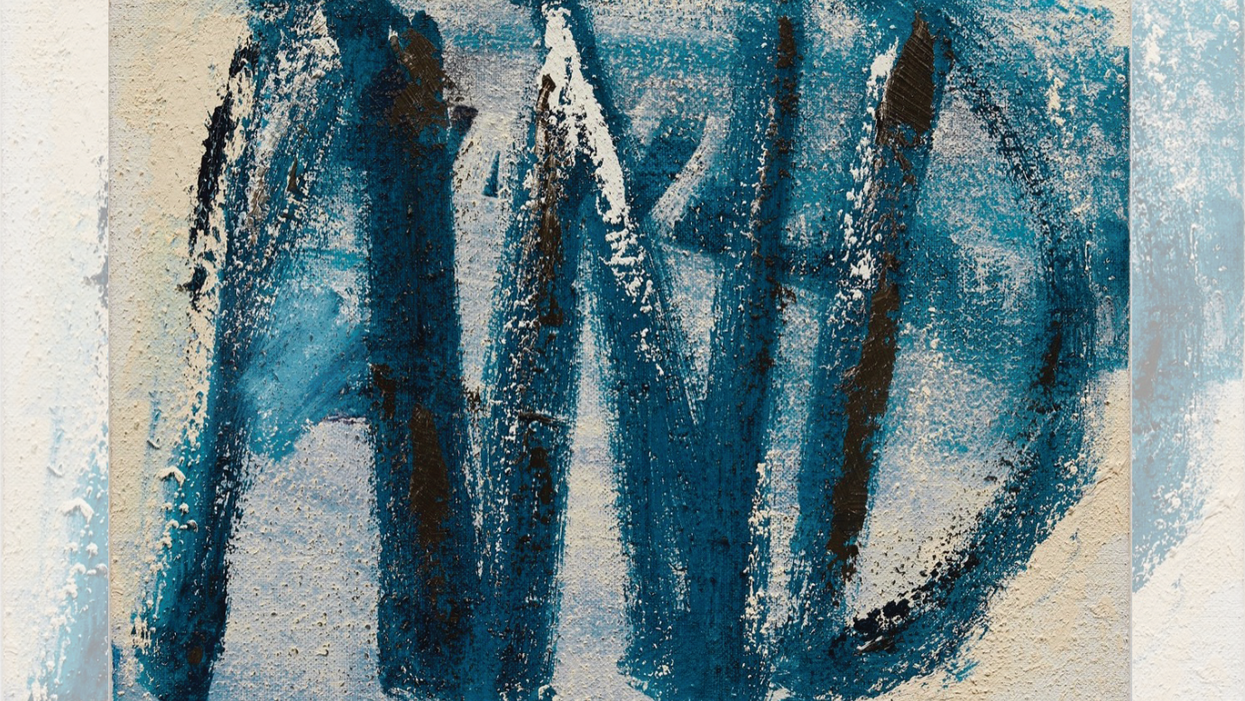
'And,' oil on burlap, by Frankfort
HOUSTON-BORN ARTIST Dana Frankfort is happy to describe herself as an abstract painter. But there’s a linguistic component to her work as well. In Frankfort’s paintings, individual words and short phrases are pulled from the context of the written page and recast in oil onto canvas and burlap. Her new show, And Jugs Paint Reuse, on view June 4-July 16 at Inman Gallery, is her most provocative and mysteriously ambiguous body of work to date.
Over the course of her career, Frankfort has painted a lot of words, some serious (“Christ”) some silly (“Meatballs”). “The words are accessible,” says Frankfort. “There’s a kind of immediacy for people who can read, and honestly, that’s something I feel really great about. But I don’t know if I put the words there for that reason.” Frankfort says she begins her paintings with a word in mind, but the first thing that goes onto the canvas is color. The word or words definitely suggest what colors to use, but the dance between language and paint goes even deeper.
“For me, the word ‘paint’ lives in a very different kind of color world than the word ‘and’,” says Frankfort. “But what interests me is what color does to a particular word.” With that in mind, Frankfort often creates several different paintings using the same word, each with a wildly different set of colors and gestures.
About half of the works in And Jugs Paint Reuse are painted on burlap, a material which impedes the speed of the brush, resulting in a stroke or “gesture” which affects how the viewer reads Frankfort’s words and mark making. “It’s a much slower pace when done on burlap,” says Frankfort. “Because of the heavy weave, the paint sits on top of and inside the fabric simultaneously, creating a spatial effect, as well as holding more paint than a traditional canvas.”
The viewers attempting to “read” the paintings in And Jugs Paint Reuse will come away with their own personal interpretations. In one of seven paintings Frankfort has done of the word “And,” there is a feeling of immediacy, even anxiety, in the streaks of cobalt and midnight blue that spell out the work’s title, a word that lies between the extremes of conflicting emotions. The title is also a near-anagram of the artist’s first name. Could this be a self-portrait?

'Jugs,' oil on canvas

'Paint,' oil on burlap
In another work titled “Paint” (one of four in the show with that name), the letters float and undulate in all caps above a dark, earth-toned nightscape, suggesting the dream-like, exalted zone artists enjoy when deep in the act of creation.
For Frankfort, whose home studio is located in her garage just a few steps from the laundry room tapping into that dream-like zone means maintaining an easy flow between daily life and painting. “My priority is making paintings I feel good about,” says Frankfort. “I try to let the work lead the way.”
Her words may be humble, the process matter-of-fact, but resulting work turns the storied history of painting on its head.
- In 'Disorienting' New Show, Influential Houston Artist Finds ... ›
- Artist Collaborates with Young Cancer Patients to Create Moving Memories of ‘Home’ - Houston CityBook ›



